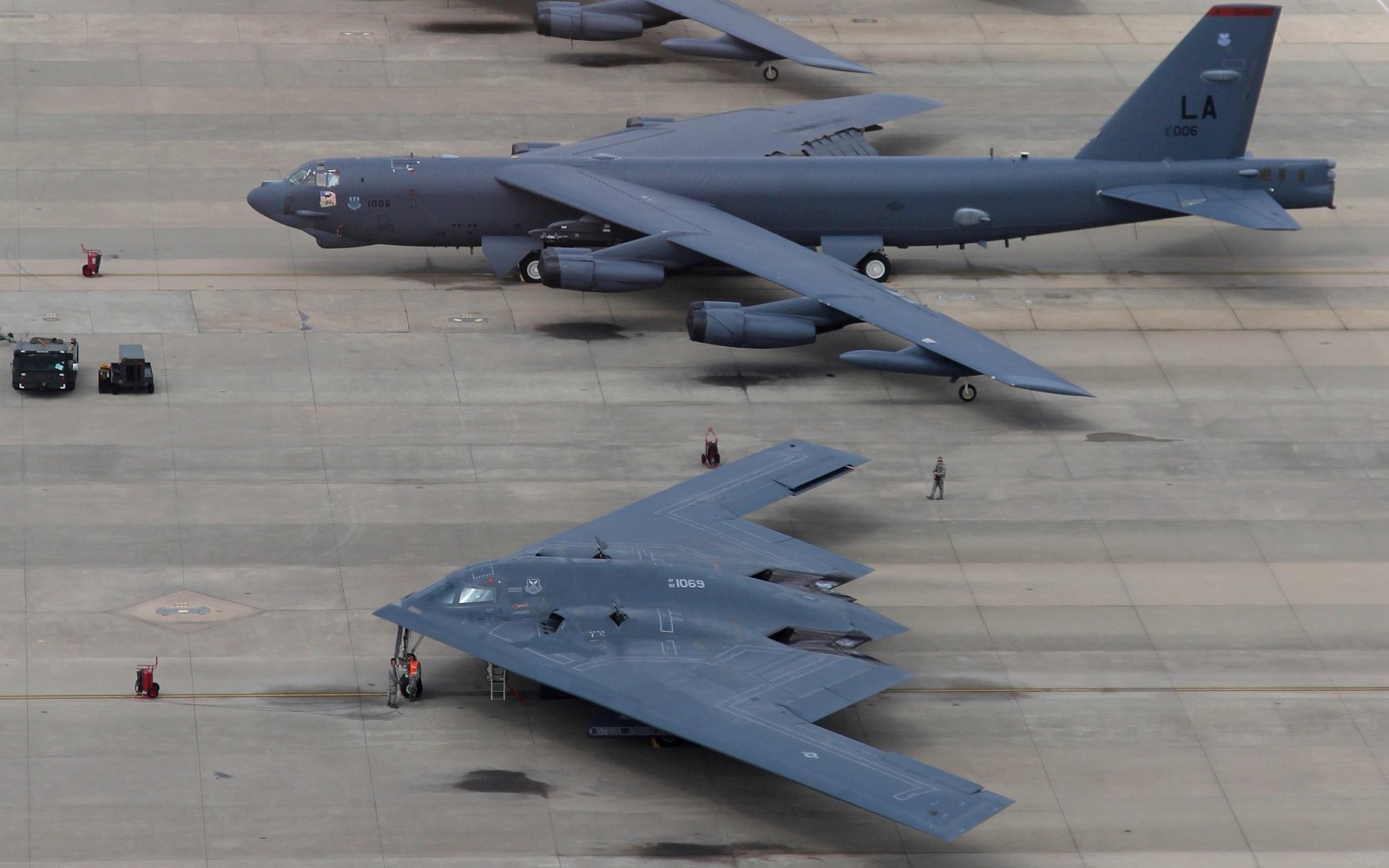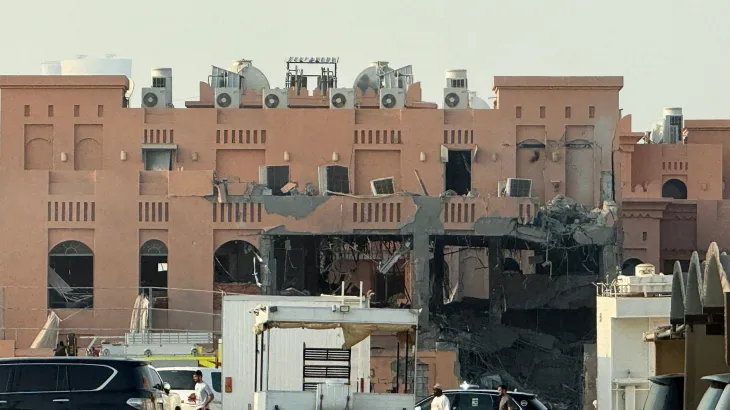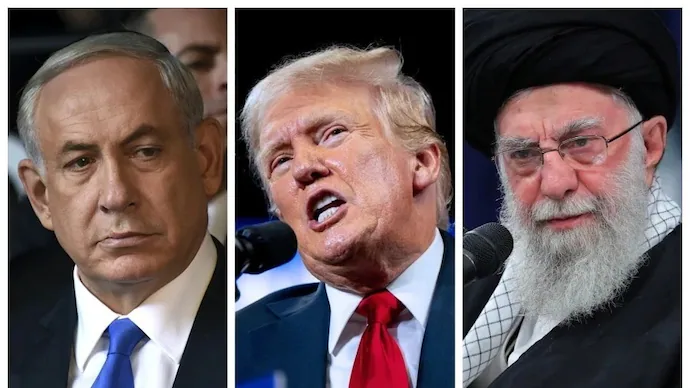The U.S. Strikes Iran: A Turning Point in the Middle East Conflict

In a bold and controversial move that has significantly altered the trajectory of the ongoing conflict in the Middle East, the United States conducted direct airstrikes on multiple Iranian nuclear facilities early Sunday morning local time. The strikes, which targeted Fordow, Natanz, and Isfahan—sites critical to Iran’s nuclear infrastructure, represent the first large-scale U.S. military operation on Iranian soil in decades, and mark the formal entry of the United States into the Israel-Iran conflict.
President Donald Trump, in a televised address from the White House, declared the attacks a "necessary and decisive action" taken to “neutralize an existential threat” to regional and global security. Describing the outcome as a “spectacular success,” Trump claimed that the facilities had been “totally obliterated,” and warned Iran that further aggression would be met with even more severe responses.
The United States’ decision to intervene militarily follows weeks of escalating hostilities between Iran and Israel. Since early June, Israel has conducted more than 100 airstrikes on Iranian military infrastructure both within Iran and across its regional proxy network. Iran has responded in kind, launching missile barrages against Israeli cities, including Tel Aviv and Haifa, and reportedly using long-range drones to strike sensitive Israeli sites.
Despite mounting regional instability, the U.S. had until now avoided direct involvement. Analysts suggest that Israel’s inability to decisively neutralize Iran’s nuclear threat—and fears that Tehran was nearing weapons-grade uranium production—may have pushed Washington to act. Furthermore, intelligence reports allegedly indicated that Iran was preparing a retaliatory "second wave" of missile attacks on U.S. bases in Iraq and Qatar, further justifying the preemptive nature of the American strike.
The operation reportedly involved stealth B‑2 Spirit bombers, supported by submarine-launched Tomahawk cruise missiles. Each strike was aimed at disabling Iran’s advanced centrifuge systems and disrupting enriched uranium storage.
Despite Trump’s triumphant tone, early damage assessments reveal a more nuanced outcome. According to unnamed Pentagon sources cited in The Washington Post, while the above-ground facilities sustained significant damage, deeply-buried components—especially in Fordow—may have survived. No nuclear fallout or radiation leaks were detected, signaling a “clean strike,” but leaving open questions about the long-term efficacy of the operation.
International reaction has been swift and divided. The United Nations Secretary-General called for “immediate de-escalation” and urged both Tehran and Washington to return to diplomatic negotiations. European leaders—while condemning Iran’s earlier missile attacks on Israel—expressed deep concern over unilateral U.S. action and the potential for regional war. Meanwhile, Russia and China labeled the strikes “reckless” and accused Washington of violating international law.
Domestically, the decision has sparked a firestorm in the U.S. Congress. Lawmakers from both parties have raised questions about the legality of the attack, citing the lack of Congressional authorization. Democratic Senate leaders have introduced an emergency resolution demanding a War Powers review, while some Republican hawks praised Trump for “restoring American deterrence.”
Iran’s Supreme Leader Ayatollah Ali Khamenei condemned the attacks as “a crime against the Iranian nation” and vowed “severe revenge.” The Iranian Revolutionary Guard Corps (IRGC) has reportedly been placed on high alert, and missile units across western Iran have been mobilized. Several drone and rocket attacks have already been launched on U.S. bases in Iraq in the hours following the strike, though no casualties have yet been confirmed.
More significantly, Iran's top nuclear official declared that the country will now fully withdraw from the Non-Proliferation Treaty (NPT) and begin enriching uranium at levels previously unseen. “The era of restraint is over,” he stated.
This pronouncement has sent shockwaves through the international community. If verified, Iran’s withdrawal from the NPT would signify a complete collapse of global non-proliferation efforts, risking a nuclear arms race in one of the most volatile regions in the world.
The United States’ airstrikes on Iranian nuclear sites mark not just a military escalation, but a dramatic geopolitical inflection point. What began as a limited confrontation between Israel and Iran has now spiraled into a broad conflict involving the world’s most powerful military. As diplomats scramble for solutions and regional actors prepare for the worst, the future of the Middle East—and possibly global security—hangs in the balance.
While the White House frames its actions as a defense of peace and stability, the risks of deeper entanglement, wider war, and devastating human consequences cannot be ignored. History will judge whether this moment was one of justified intervention—or the beginning of a far more dangerous chapter in modern warfare.
President Donald Trump, in a televised address from the White House, declared the attacks a "necessary and decisive action" taken to “neutralize an existential threat” to regional and global security. Describing the outcome as a “spectacular success,” Trump claimed that the facilities had been “totally obliterated,” and warned Iran that further aggression would be met with even more severe responses.
The United States’ decision to intervene militarily follows weeks of escalating hostilities between Iran and Israel. Since early June, Israel has conducted more than 100 airstrikes on Iranian military infrastructure both within Iran and across its regional proxy network. Iran has responded in kind, launching missile barrages against Israeli cities, including Tel Aviv and Haifa, and reportedly using long-range drones to strike sensitive Israeli sites.
Despite mounting regional instability, the U.S. had until now avoided direct involvement. Analysts suggest that Israel’s inability to decisively neutralize Iran’s nuclear threat—and fears that Tehran was nearing weapons-grade uranium production—may have pushed Washington to act. Furthermore, intelligence reports allegedly indicated that Iran was preparing a retaliatory "second wave" of missile attacks on U.S. bases in Iraq and Qatar, further justifying the preemptive nature of the American strike.
The operation reportedly involved stealth B‑2 Spirit bombers, supported by submarine-launched Tomahawk cruise missiles. Each strike was aimed at disabling Iran’s advanced centrifuge systems and disrupting enriched uranium storage.
Despite Trump’s triumphant tone, early damage assessments reveal a more nuanced outcome. According to unnamed Pentagon sources cited in The Washington Post, while the above-ground facilities sustained significant damage, deeply-buried components—especially in Fordow—may have survived. No nuclear fallout or radiation leaks were detected, signaling a “clean strike,” but leaving open questions about the long-term efficacy of the operation.
International reaction has been swift and divided. The United Nations Secretary-General called for “immediate de-escalation” and urged both Tehran and Washington to return to diplomatic negotiations. European leaders—while condemning Iran’s earlier missile attacks on Israel—expressed deep concern over unilateral U.S. action and the potential for regional war. Meanwhile, Russia and China labeled the strikes “reckless” and accused Washington of violating international law.
Domestically, the decision has sparked a firestorm in the U.S. Congress. Lawmakers from both parties have raised questions about the legality of the attack, citing the lack of Congressional authorization. Democratic Senate leaders have introduced an emergency resolution demanding a War Powers review, while some Republican hawks praised Trump for “restoring American deterrence.”
Iran’s Supreme Leader Ayatollah Ali Khamenei condemned the attacks as “a crime against the Iranian nation” and vowed “severe revenge.” The Iranian Revolutionary Guard Corps (IRGC) has reportedly been placed on high alert, and missile units across western Iran have been mobilized. Several drone and rocket attacks have already been launched on U.S. bases in Iraq in the hours following the strike, though no casualties have yet been confirmed.
More significantly, Iran's top nuclear official declared that the country will now fully withdraw from the Non-Proliferation Treaty (NPT) and begin enriching uranium at levels previously unseen. “The era of restraint is over,” he stated.
This pronouncement has sent shockwaves through the international community. If verified, Iran’s withdrawal from the NPT would signify a complete collapse of global non-proliferation efforts, risking a nuclear arms race in one of the most volatile regions in the world.
The United States’ airstrikes on Iranian nuclear sites mark not just a military escalation, but a dramatic geopolitical inflection point. What began as a limited confrontation between Israel and Iran has now spiraled into a broad conflict involving the world’s most powerful military. As diplomats scramble for solutions and regional actors prepare for the worst, the future of the Middle East—and possibly global security—hangs in the balance.
While the White House frames its actions as a defense of peace and stability, the risks of deeper entanglement, wider war, and devastating human consequences cannot be ignored. History will judge whether this moment was one of justified intervention—or the beginning of a far more dangerous chapter in modern warfare.







